Out of the Blue
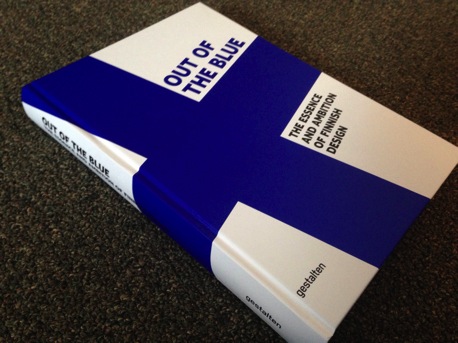
Review by Paul A. Ranogajec
Everything that may be conjured in your mind by the phrase “Finnish design” is likely to be represented one way or another in Out of the Blue, a collection of biographical vignettes and interviews by Marko Ahtisaari and Laura Houseley. Through its short profiles, the reader is offered insight into what a broad selection of contemporary Finnish designers–and a handful of their famous predecessors including Alvar Aalto, Kaj Franck, and Tapio Wirkkala–think about their practice in relation to their esteemed national design tradition.
Of course, two of the key terms in that last sentence, “national” and “tradition,” are ambiguous, at best. Some of the designers profiled in the book defiantly eschew any connection to a tradition or a “national school” as such. They see themselves as independents, even mavericks, forging ahead along paths of their choosing.
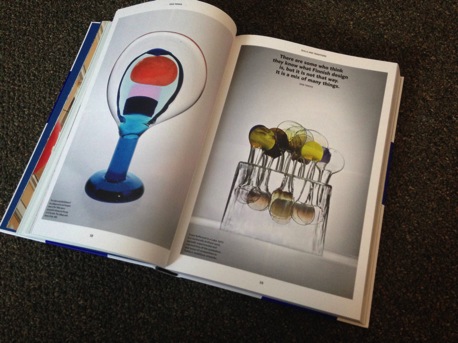
Others, such as Oiva Toikka, Minna Kemell-Kutvonen of the revered Marimekko company, and illustrator and graphic designer Klaus Haapaniemi, speak of a mix of influences. Kemell-Kutvonen expresses Finnish design as the product of geography:
“We’re in the middle of two different cultures, East and West. When we talk about aesthetic understanding and culture, this is important. I think there is a really interesting culture that we’ve gained from the East: more romantic, ornamental and so on. A rich aesthetic. Then from the West and Scandanavia comes a minimalistic and graphical tradition and so on. In Finland, we have a lovely way of mixing them together” (p. 144).
Some of the product and design examples in the book provide the proof of that assertion, but many lean more decidedly in either the ornamental or the minimalist direction. In most cases, though, the designers exhibit a pride that comes with participation in a collective design outlook.
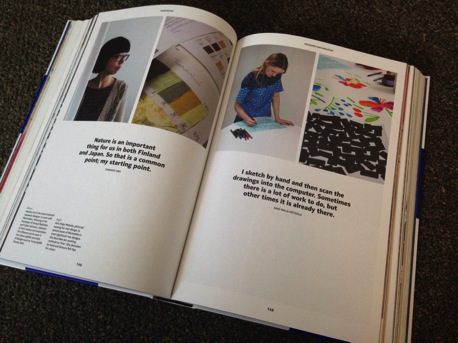
What does the book propose to be the “essence and ambition” of Finnish design? The foreword by Ahtisaari, head of design at Nokia from 2009 to 2013, makes a claim for “products that are pure and human, yet advanced, and built better in every way. They are products for emotional communication, products that connect people.” He sees in the course of Finnish design a concern for “fundamental research in materials, cognition, connectivity and power” and a drive “to produce more social, emotive and natural modes of interacting” with objects. His brief foreword, however, can do no more than assert such grandiose claims.
Fortunately, these themes are explored more deeply in Dan Hill’s richly suggestive opening essay, which is the conceptual glue holding this book together. Without it, the designer profiles and photographs could be mistaken as no more than a collected melange, some interesting, some banal.
Hill’s intelligent essay engages a range of questions at the intersections of design, cultural identity, and nationalism. He nicely puts the emphasis on what he calls “orientations” in Finnish character and culture rather than the “essences” of the book’s title. This allows him to be open to alternatives and subcurrents that can be easily overlooked in too dogmatic an insistence on “craft, nature, solitude, and silence” as the basis of Finnish design. As he observes, “each note of Finnishness has, if not its opposite, its ‘adjacent possibility’” (p. 43). So, for instance, the recent burgeoning diversity of Helsinki is cast as a welcome challenge to the relative homogeneity and inwardness of Finnish society, providing the country with “a form of prototyping ground and testbed for what Finnishness can be.” The result, Hill hopes, will be genuine diversity which retains “a sense of provenance” (p. 40).
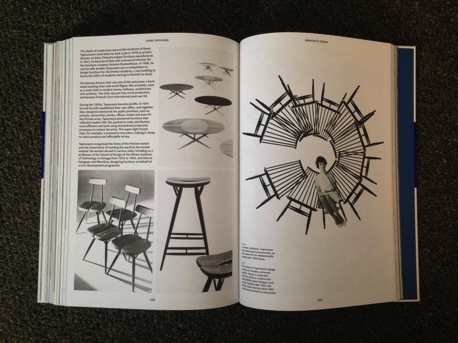
The bulk of the book is made up of designer and company profiles, punctuated with themed chapters on the Kalevala epic poem, the puukko knife, sauna culture, and the talkoot, a ritual of community upkeep. Interspersing these themed chapters helps avoids the potential monotony that might come from a long, uninterrupted series of brief interviews (the book is over 400 pages). The photographs and examples of design work, including prints, textile patterns, book illustrations, and sketches, provide a great deal of visual interest. The balance is about right between text and image, although not all of the interviews are as revealing as one might hope.
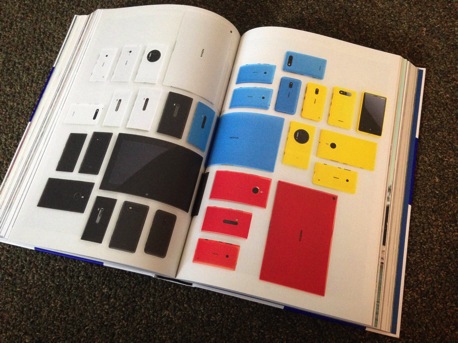
The reader should be advised that this is, in part, a vanity book. The large section in the very middle on Nokia reminds the reader of the self-serving aspect of the publication. Nokia is presented as the very epitome of Finnish design: it occupies the physical center of the book, suggesting that the firm is central to contemporary Finnish production, and the lavish treatment showcasing one type of consumer product (the mobile phone) suggests the company has incorporated and expressed the essence of Finnishness in its product designs.
Thus, when a Nokia designer is quoted saying, “There are many great products, all sharing common values. […] There is a unifying idea, and a fearlessness, behind all these products,” the reader cannot help but take this as marketing copy. Of course, the Nokia section is a small part of a much larger book, but the chapter stands out by being longer than any other and being right in the middle.
Despite this, Out of the Blue provides a good snapshot of what contemporary Finnish design is and, in broad strokes, shows what is has been (at least since the middle of the twentieth century, which seems to be the extent of the editors’ historical imagination). For the reader willing to take up Dan Hill’s challenge, it provides context for thinking about how to maintain commitment to a venerable, if largely recent, national tradition in age where national identity is both less constricting to the individual and more challenging to define than ever. Out of the Blue may not provide answers, but it can help frame the questions for thoughtful designers and critics alike.
Out of the Blue: The Essence and Ambition of Finnish Design is edited by Marko Ahtisaari and Laura Jouseley and is published by Gestalten. You can support the Designer’s Review of Books by ordering from Amazon US|UK|DE
About the Reviewer
Paul A. Ranogajec is an independent art historian based in New York City. He writes about art and architecture from the Renaissance to the present. He can be found online at paulranogajec.tumblr.com.

